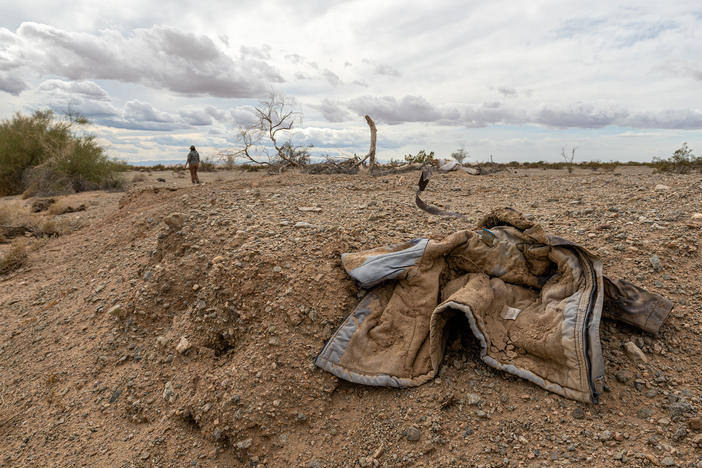Section Branding
Header Content
Biden creates a new national monument near the Grand Canyon
Primary Content
Updated August 8, 2023 at 3:46 PM ET
President Biden designated a new national monument near the Grand Canyon on Tuesday. The move protects lands that are sacred to indigenous peoples and permanently bans new uranium mining claims in the area. It covers nearly 1 million acres.
The president gave remarks at the Historic Red Butte Airfield in Arizona before signing the proclamation and visiting the Grand Canyon.
"Our nation's history is etched in our people and in our lands," Biden said. "Today's action is going to protect and preserve that history, along with these high plateaus and deep canyons."
Tuesday's announcement is part of a trip that will include New Mexico and Utah, where Biden is making the case for how he's tackling the climate and economic challenges facing Americans in the West.
The monument follows a years-long effort
In the Grand Canyon, tribal nations and conservationists have been calling for additional protections in the area for years, as KNAU's Ryan Heinsius has reported.
A recent statewide poll showed broad support for the proposal, though local ranchers who have worked the land for generations have concerns. Senior administration officials told reporters that the national monument designation upholds private property rights; it also does not affect existing uranium mining claims.
Still, Interior Secretary Deb Haaland, the first Native American Cabinet secretary, called Biden's move "historic."
"It will help protect lands that many tribes referred to as their eternal home, a place of healing and a source of spiritual sustenance," she said. "It will help ensure that indigenous peoples can continue to use these areas for religious ceremonies, hunting and gathering of plants, medicines and other materials, including some found nowhere else on earth. It will protect objects of historic and scientific importance for the benefit of tribes, the public and for future generations."
Haaland called her own trip to the area in May "one of the most meaningful trips of my life."
The new national monument will be called Baaj Nwaavjo I'tah Kukveni Grand Canyon National Monument. According to the Grand Canyon Tribal Coalition that drafted a proposal for the monument, "Baaj Nwaavjo" means "where tribes roam" in Havasupai, and "I'tah Kukveni" translates to "our ancestral footprints" in Hopi.
Biden's broader agenda
Biden has created four other national monuments during his presidency — one honors Emmett Till, and the others protect land in Nevada, Texas and Colorado.
But the politics of Biden's Western swing are broader than preservation. It is about emphasizing what the administration has already done to invest in the economy and the climate — because many Americans just don't know about it.
Asked whether this week's trip is about advertising accomplishments, press secretary Karine Jean-Pierre told reporters, "We're going to continue to do our jobs and continue to talk about it ... And the hope is that we'll get our message out."
She said support would continue to build for the president as the legislation is implemented around the country. "We'll see, I think, Americans start to feel and see what it is that we have been able to do in Washington, D.C."
And the Biden reelection campaign is counting on it.
Copyright 2023 NPR. To see more, visit https://www.npr.org.
Bottom Content





